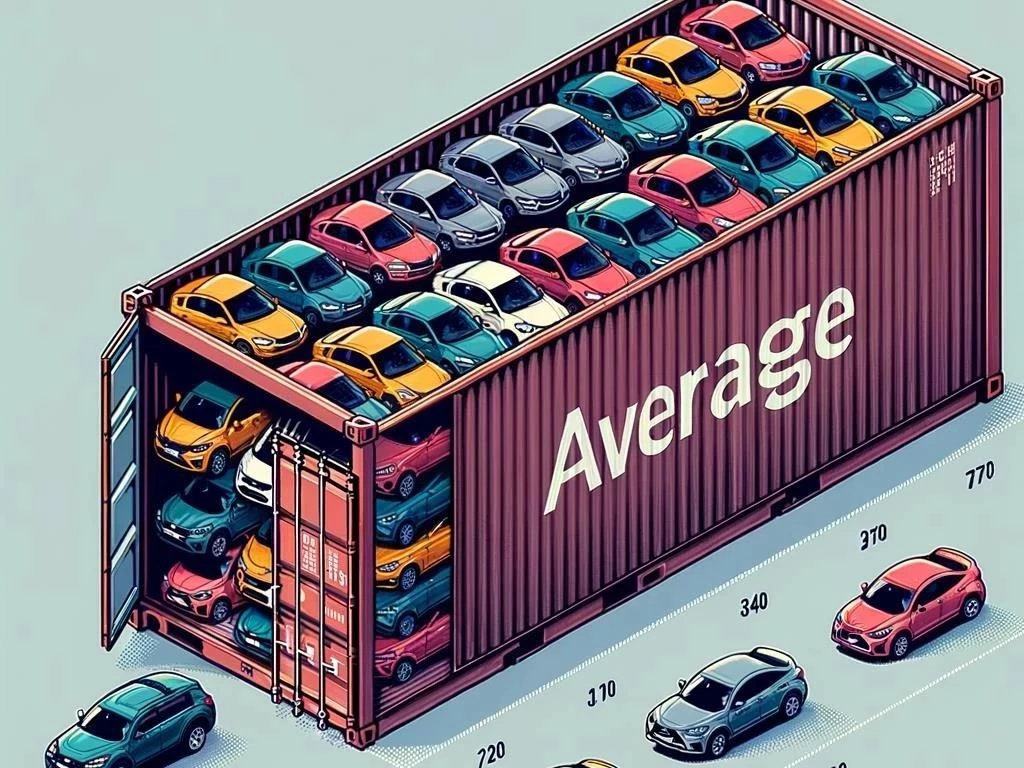How Many Cars Fit in a Shipping Container?
Determining how many cars fit in a shipping container depends on container dimensions‚ vehicle size‚ and loading efficiency․ Explore options for optimal capacity utilization․
Shipping containers are essential in the transportation industry‚ facilitating efficient vehicle shipping and international shipping․ Understanding their structure‚ sizes‚ and cargo capacity is crucial for optimizing car transport․ Containers come in various sizes‚ generally 20-foot or 40-foot‚ with specific container dimensions that affect how many vehicles can be loaded․ Properly utilizing container loading techniques ensures maximum space and shipping efficiency․ Additionally‚ knowing the limits of car storage within these containers helps logistics companies streamline their operations․ Whether exporting or importing cars‚ understanding these factors can significantly influence shipping rates and overall automotive logistics strategies in the global market․
Understanding Container Dimensions
Container dimensions play a vital role in determining how many cars fit inside․ Standard containers typically measure 20 feet and 40 feet in length․ The width and height are also crucial‚ as they affect vehicle loading and space utilization․ A 20-foot container can generally accommodate one to two standard-sized automobiles‚ while a 40-foot container can fit up to four vehicles‚ depending on their dimensions․ Additionally‚ the internal space must be considered for proper loading strategies and securing vehicles during transit․ Understanding these dimensions is essential for effective automotive logistics and ensuring that shipping methods maximize cargo capacity and efficiency․
Cargo Capacity of Shipping Containers
The cargo capacity of shipping containers significantly influences how many cars can be loaded․ A 20-foot container typically has a maximum payload of about 28‚200 pounds‚ while a 40-foot container can handle approximately 59‚000 pounds․ This capacity determines the number of vehicles that can be transported based on their individual weights․ Moreover‚ the arrangement and securing of cars during loading also impact the total quantity․ For instance‚ compact cars can allow for more units per container compared to larger SUVs․ Understanding cargo capacity is essential for optimizing shipping efficiency and minimizing costs in automotive logistics․
Vehicle Shipping Overview
Vehicle shipping involves transporting cars using various containers and methods․ Understanding container capacities and dimensions is essential for optimizing space and ensuring safe delivery․
4․1․ Importance of Automotive Logistics
Automotive logistics plays a critical role in efficiently transporting vehicles across various distances․ Understanding how many cars fit in a shipping container directly impacts planning and execution․ Effective logistics ensures that vehicles are loaded securely‚ maximizing cargo capacity while minimizing damage risk during transit․ Additionally‚ it facilitates timely delivery‚ which is essential in today’s competitive market․ By optimizing shipping methods and managing container sizes‚ logistics companies can enhance operational efficiency and reduce shipping rates․ Furthermore‚ well-planned automotive logistics contributes to overall customer satisfaction‚ ensuring that vehicles arrive safely and promptly at their destinations‚ whether local or international․
4․2․ Types of Vehicles Suitable for Container Shipping
When considering how many cars fit in a shipping container‚ it’s essential to identify suitable vehicle types․ Generally‚ standard sedans and compact cars are ideal due to their dimensions and weight‚ allowing for efficient loading․ Additionally‚ smaller SUVs and crossovers can also be accommodated effectively within containers․ However‚ larger vehicles like trucks or vans may require specialized arrangements and often fewer units per shipment․ Electric vehicles‚ with varying weights‚ also fit within these guidelines․ Understanding the compatibility of vehicle types with shipping container capacity is crucial for maximizing efficiency and optimizing logistics during the transport process․
Loading Cars into Shipping Containers
Loading cars into shipping containers requires careful planning and execution․ Proper techniques ensure maximum utilization of space and secure transportation of vehicles during transit․
5․1․ Shipping Methods for Loading Cars
When loading cars into shipping containers‚ various methods can be employed to maximize space and ensure security․ Roll-on/roll-off (RoRo) shipping is popular for larger shipments‚ allowing vehicles to be driven directly onto vessels․ However‚ for containerized shipping‚ utilizing techniques like stacking smaller vehicles efficiently can optimize space․ Additionally‚ securing vehicles with appropriate tie-downs prevents movement during transit․ Using ramps can facilitate loading‚ while specialized equipment may be required for heavier vehicles․ Understanding these shipping methods is crucial for determining how many cars fit in a shipping container and ensuring a safe and efficient transportation process․
5․2․ Container Loading Best Practices
Implementing best practices for container loading is essential to maximize space and ensure vehicle safety․ First‚ accurately measure vehicle dimensions to determine suitable arrangements within the container․ Prioritize loading smaller cars first‚ utilizing available space effectively․ Ensure that vehicles are properly secured using straps and blocks to prevent movement during transit․ Additionally‚ maintain a balanced load distribution to avoid tipping or shifting․ Inspect loading equipment for any damage before use‚ and follow all safety protocols․ Lastly‚ documenting the loading process helps track vehicle conditions and maintain organization․ These practices are vital for optimizing how many cars fit in a shipping container․

Factors Affecting Car Transport Capacity
Several factors influence car transport capacity within shipping containers‚ including vehicle dimensions‚ weight‚ container size‚ and loading techniques‚ all crucial for efficient logistics management․
6․1․ Container Size and Type
The size and type of shipping container significantly impact how many cars can fit inside․ Standard containers are typically available in 20-foot and 40-foot sizes․ A 20-foot container generally accommodates one to two compact cars‚ while a 40-foot container can hold up to four smaller vehicles․ Additionally‚ high-cube containers‚ which offer extra height‚ may provide more space for taller vehicles‚ enhancing loading efficiency․ Furthermore‚ specialized containers‚ such as those with reinforced structures for heavier vehicles‚ may alter capacity as well․ Understanding these variations helps logistics professionals optimize space and ensure safe transport for different vehicle types․
6․2․ Vehicle Dimensions and Weight
Vehicle dimensions and weight are critical factors influencing how many cars can fit in a shipping container․ Each vehicle’s length‚ width‚ and height must be considered during loading to maximize space effectively․ Standard sedans typically have smaller dimensions‚ allowing more vehicles to be loaded in a single container․ Conversely‚ larger SUVs and trucks take up more space and may reduce capacity; Additionally‚ the total weight of the vehicles must not exceed the container’s payload limit‚ which can affect the number of cars loaded․ Understanding these specifications ensures safe transport and optimal utilization of container space during automotive logistics․
Shipping Rates and Costs
Shipping rates and costs are influenced by container size‚ vehicle dimensions‚ weight‚ distance‚ and logistics services․ Understanding these factors aids in budget planning․
International Shipping Considerations
When determining how many cars fit in a shipping container for international shipping‚ several considerations come into play․ Customs regulations and documentation requirements can vary by country‚ affecting the overall shipping process․ Additionally‚ understanding import/export restrictions is crucial to prevent delays․ The choice of shipping methods‚ such as containerized versus RoRo‚ can impact costs and logistics efficiency․ Furthermore‚ calculating shipping costs involves considering insurance and potential tariffs․ It’s essential to work with experienced logistics providers familiar with international standards to ensure compliance and smooth transportation․ These factors collectively influence the effectiveness of automotive logistics on a global scale․
Maximizing shipping efficiency is essential for optimizing how many cars fit in a shipping container․ By understanding container dimensions‚ vehicle specifications‚ and loading techniques‚ logistics professionals can enhance operational effectiveness․ Employing best practices ensures that vehicles are securely loaded‚ minimizing damage during transit while maximizing cargo capacity․ Furthermore‚ considering factors such as shipping rates and international regulations is crucial for successful automotive logistics․ Continuous evaluation of shipping methods and practices allows companies to adapt to changing market demands․ Ultimately‚ effective planning and execution within these parameters lead to improved efficiency‚ cost savings‚ and enhanced customer satisfaction in the shipping process․








